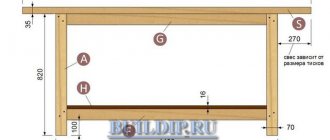Despite the increase in popularity, the bicycle is still perceived as a piece of equipment for exercise or fun for children and teenagers. But this is completely wrong, since it is capable of performing many functions that are usually assigned to cars. The bicycle as a cheap urban transport is gaining momentum, but cargo models are rarely seen on the roads of the former USSR. Apparently, inertia of thinking is to blame for this. But in other countries, a special bike carrying passengers or goods is not at all a rarity, but an everyday occurrence. There are a large number of different cargo vehicles, the design of which is adapted specifically to these purposes, but their use is not always justified. In many cases, it is much easier to use a dedicated bike trailer or cart.
Advantages and disadvantages of bicycle trailers
Cargo bikes do their job perfectly. They come in two- and three-wheeled versions, are capable of carrying very significant weight and are undemanding in maintenance. However, their main drawback is the lack of versatility. You can't go for a walk or to the store with them. For these purposes you will have to buy another bike. Plus, they take up too much space.
But a bicycle cart is a completely different matter. If you need to transport something, it can be attached to a regular bike in a matter of minutes, and you can hit the road. After the task is completed, the cart is just as easily detached, and you are free to ride your bike wherever you want. Therefore, cargo bicycles are used mainly for commercial purposes, but in everyday life a bicycle trailer is much more practical and expedient.
Bicycle carts have a number of other advantages. First of all, it is multifunctional. There are models of trailers that, through simple manipulations, turn from a loading platform into an ordinary hand truck or even a garden wheelbarrow. Some of these devices easily accommodate passenger seats, and you end up with a rickshaw of sorts. Another advantage is the small dimensions. In addition, the bicycle cart can be folded, which makes it easier to store and transport. Another plus is ease of operation, since the base of the trailer, as a rule, is ordinary bicycle wheels. The maintainability of load-bearing structural elements is also very high.
Bicycle trolley for advertising display
At the same time, bicycle trailers are not without some disadvantages. Compared to special cargo bikes, they have significantly less carrying capacity and capacity. If 150 kg is far from the limit for a bicycle truck, then most carts are designed for a maximum of 50–60 kg.
While driving, the trailer can wobble from side to side, it skids quite a lot when turning, and the maneuverability of the bicycle deteriorates significantly. Certain restrictions are also imposed on the type of bike that acts as a tractor. If you have a road bike, then you can immediately discard the thought of transporting goods. You'll need something more powerful, with a strong frame and thick wheels - a city bike, a hybrid or a mountain bike. In addition, when driving, the cart is behind you, out of your line of sight, and you cannot see what is happening with the cargo or passengers.
Cargo trailer for bicycle
The bicycle itself is a unique means of transportation, but its low carrying capacity sometimes becomes a pressing problem for many cycling enthusiasts. However, today there are many additional accessories on the market that make life easier for cyclists. So, to transport cargo heavier than ten kilograms, you can purchase an excellent assistant - a comfortable bicycle trailer. This product is great for trips to the country, fishing, shopping or cycling.
It is worth noting that domestic cycling enthusiasts quite successfully manage to independently make various carts for transporting goods on a bicycle. Sometimes cyclists decide to take this step to save money, and sometimes to satisfy their desire to create something with their own hands. Whether to buy a ready-made structure or make it yourself - everyone must decide for themselves.
Bicycle trolley device
When it comes to bicycle carts, they are usually equated with trailers, but this is not entirely correct. Both of these concepts denote a special device designed to transport goods or passengers, but there are certain differences in their design. A trailer can only have one wheel, but a dolly must have at least two. We can say that every cart is a trailer, but not every trailer is a cart. Single-wheel trailers are used mainly by tourists and travelers to transport luggage, and we are primarily interested in their use for more utilitarian and mundane purposes.
Mountain bike rack
So, a bicycle cart usually has from two to four wheels, which are attached to a special frame. Such a frame can be made of metal, and in some cases, wood. Typically, industrial designs use square or round pipes made of steel or aluminum alloys. Wood, due to its low cost and ease of processing, is widely used in home crafts products.
As a rule, bicycle wheels with spokes are used in the design of trailers; their diameter is not particularly important and can be very different. Some models come with solid metal wheels with solid rubber tires, similar to those found on children's bicycles and hand luggage carts. The axle of each wheel is fixed separately in the frame in special mounting sockets, similar to bicycle dropouts. A common axle for wheels is rarely used.
The cart is connected to the bicycle using a special rigid hitch or drawbar. The attachment points may vary depending on the trailer design. The most common ones are the seatpost, rear axle, chainstays or chainstays, and rack. Fixation is carried out using a hinge or coupling. Some models are equipped with a towbar. Many do-it-yourselfers use chains, ropes, cables and other improvised devices, but such fastenings are unreliable and can be dangerous.
Attaching the trolley to the seat tube
Many trailers are equipped with fenders and mud flaps to protect cargo and passengers from dirt and stones flying from under the wheels, as well as shock absorbers.
Types of bicycle trailers
As we have already noted, trailers can have from one to four wheels. Single-wheel trailers are not suitable for transporting large luggage, so we will focus on two-wheeled carts. Depending on the area of application, they can be divided into several main types:
Universal cargo trucks are perfectly suited for transporting anything, be it crops from a summer cottage, building materials or small-sized furniture. The load capacity of a conventional trolley largely depends on the quality of the materials from which it is made, and on average is about 50 kg. In more spacious versions, very durable pipes are used, and the platform area is increased.
Load trolley 120 kg
Passenger trailers are designed to provide their occupants with the greatest comfort and safety. Many of them undergo special crash tests. These carts are wider than cargo carts and have a lower center of gravity, which allows them to maintain stability in turns. They are also equipped with seat belts, a canopy and shock absorbers, and sometimes a luggage compartment.
Passenger bicycle trailer
Children's trolleys are similar to passenger trolleys, but may have some special features. They are also equipped with an awning and soft seats. In addition, many models provide the possibility of using them as a lightweight stroller for a child.
Multifunctional baby stroller trailer Thule Chariot Cougar
Commercial bicycle carts are primarily characterized by their large dimensions, otherwise their use would be unprofitable. Most often, they are used as mobile retail outlets, so they are equipped with special equipment, for example, a refrigeration unit for selling ice cream, a counter with taps and space for beer kegs, a coffee machine, and so on. Also, such trailers are equipped with side lights and other optics necessary for driving on public roads.
DIY making
Two-wheeled
Making a two-wheeled wooden cart with your own hands is quite simple. You don't need metal cutting equipment or a welding machine for this. Wood processing is carried out with standard tools. But the strength, capacity and durability of such carts are significantly inferior to metal products with a large number of wheels. The step-by-step creation algorithm is as follows:
- To make the frame, you need to use thick boards (at least 70 x 70 mm). Screws are driven into the corners of the frame, and the frame structure is reinforced with additional floors.
- Screw two bearing rails to the bottom of the frame. Then secure the wheels.
- It is advisable to make the handle from metal. This will make the cart more resistant to stress. To do this, you can use a handlebar from an old bicycle or a long metal stick.
- Then the board sides should be installed on the frame. The capacity of the cart depends on their size. The strength of the structure is ensured by a reliable frame and firmly installed wheels.
If you have a ready-made axle from an old moped or go-kart, you won’t have to use boards with bearings.
A two-wheeled cart with bicycle wheels will be quite stable
Four-wheeled
The four-wheel cart has the following advantages: capacity, durability and longevity. Such strollers are made of metal, since other materials will not withstand heavy loads. DIY four-wheel metal strollers can carry loads weighing up to 100 kg. For manufacturing you will need a mechanic's tool kit. A step-by-step algorithm for creating a four-wheeled cart with your own hands is as follows:
- First you need to make a container for the load. If liquid is transported, then it is necessary to check the tightness of the structure.
- To install the frame you will have to use a welding machine. A handle should be welded to the frame. Pipe scraps are suitable for making the frame.
- It is necessary to make all measurements of the loading platform in advance. In the case of the manufacture of a four-wheeled platform trolley, the size of the frame depends on the dimensions of the cargo container.
- Then the wheels need to be welded to the bottom of the frame.
- Next, you should take care of the load-carrying capacity of the structure. Pneumatic wheels can increase the trolley's load capacity up to 80 kg.
Metal pipes provide high load capacity
Video: “Assembling a four-wheeled platform cart”
Folding
A self-made folding cart can withstand loads of up to 50 kg. Its main advantage is its compactness. Step-by-step instructions for making a folding cart are as follows:
- For manufacturing, choose pipes with a thickness of 2 mm or more.
- It is necessary to make drawings of the frame in full size in order to use them as a template when bending pipes.
- The hinge bushings are welded to the platform frame.
- The bushings are then welded to the main frame.
- All seams must be cleaned and polished.
Fig.1 Design of a folding cart: 1 - handle in retracted position, 2 - handle bushing, 3 - frame, 4 - crossbars, 5 - wheel, 7 - space for cargo, 8 - space crossbars, 9 - lock, 10 - axle, 11 - cargo area bushing, 12 - frame bushing











